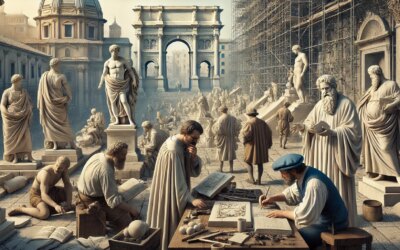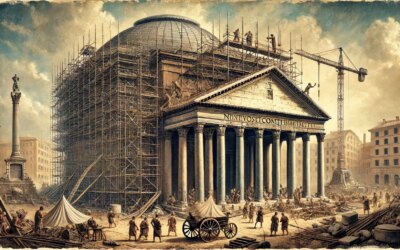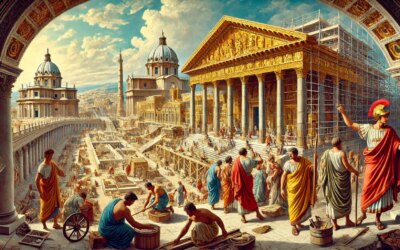Rome: The Pinnacle of the Grand Tour
In the 18th century, Rome stood at the heart of an educational and cultural phenomenon known as the Grand Tour. Wealthy European aristocrats and intellectuals traveled to Italy to study the remnants of classical antiquity, deepening their appreciation for Roman architecture, art, and history. This journey, undertaken primarily by young noblemen, was seen as an essential part of their education and refinement.
Why Rome? The Eternal City’s Timeless Appeal
Rome, with its vast collection of ancient ruins, Renaissance masterpieces, and Baroque splendor, was the ultimate destination on the Grand Tour. Travelers marveled at the grandeur of the Colosseum, the elegance of the Pantheon, and the ruins of the Roman Forum. Many commissioned local artists to paint landscapes and sketches of these sites, bringing home souvenirs that would influence European art and architecture.
Scholars, Collectors, and Artists
The Grand Tour was not just for aristocrats—it attracted scholars, architects, and artists eager to study ancient Rome firsthand. Figures like Johann Joachim Winckelmann, the father of modern archaeology, revolutionized the study of classical art through his work in Rome. Collectors amassed ancient sculptures, inspiring the neoclassical movement that swept through Europe.
The Impact on European Art and Architecture
Many of the travelers who visited Rome returned to their home countries with a newfound appreciation for classical ideals. This led to a revival of Greco-Roman styles in architecture and design, influencing everything from palaces to government buildings. The neoclassical movement, seen in cities like London, Paris, and Berlin, owed much to the lessons learned in Rome.
The End of an Era
By the late 18th and early 19th centuries, political upheavals and the Napoleonic Wars made the Grand Tour increasingly difficult. However, its influence endured, as Rome remained a beacon of classical inspiration for artists, historians, and architects worldwide.
A Legacy That Lives On
The Grand Tour cemented Rome’s status as the cultural capital of Europe. Even today, its ruins continue to inspire travelers, much as they did centuries ago. The fascination with classical antiquity, first revived by 18th-century visitors, remains an essential part of Rome’s identity and global legacy.






